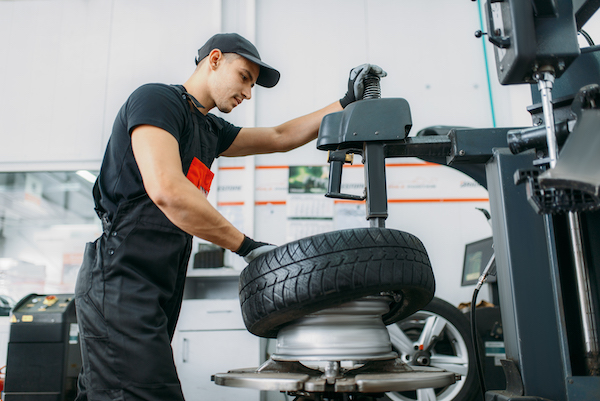Conserve Big with Mopar Tire Service Specials: Ideal Offers and Professional Treatment
Conserve Big with Mopar Tire Service Specials: Ideal Offers and Professional Treatment
Blog Article
Tire Solution: The Influence of Weather Conditions
When it comes to guaranteeing optimal performance and safety on the roadway, recognizing the influence of weather conditions on tire solution is crucial. In this discussion, we will check out the intricate partnership between climate problems and tire service, dropping light on the relevance of weather-specific tire upkeep practices and considerations.
Heat and Tire Performance
When exposed to high temperatures, tires experience modifications in efficiency that can considerably influence vehicle safety and handling. The heat generated from prolonged driving or hot weather problems triggers the tire rubber to soften, leading to reduced step life and raised wear.
Furthermore, high temperatures can accelerate the process of tire aging, triggering the rubber to weaken much more quickly. To mitigate the effects of warmth on tire performance, chauffeurs need to frequently check their tire stress, rotate tires to ensure also wear, and inspect for any indications of damage.
Winter Results
Cold weather problems can have a substantial influence on tire efficiency and safety. As temperature levels decrease, tire rubber can set, causing decreased grip on icy or snow-covered roads. In winter, tires might likewise shed atmospheric pressure a lot more rapidly, which can impact handling and gas performance. In addition, cold temperatures can cause tire sidewalls to stiffen, raising the threat of damage from gaps or various other road risks.
To reduce the impacts of cool weather on tires, it is essential to consistently check tire stress and inflate them to the supplier's suggested degrees. Using winter months or all-season tires developed for winter problems can likewise enhance grip and grasp on icy or snowy roads - mopar tire service specials. Proper tire maintenance, consisting of regular assessments for wear and damage, ends up being a lot more important during colder months to ensure optimal efficiency and security
Rainy Issues Impact
During wet problems, tire efficiency and security can be dramatically affected by the damp road surface areas and reduced visibility. The step pattern of tires plays a critical role in maintaining grip on damp roadways. Tires with worn-out footsteps are a lot more vulnerable to hydroplaning, where a layer of water accumulates in between the tire and the roadway surface, resulting in loss of grip. To battle this, motorists need to regularly check their tires for sufficient walk depth and think about buying tires specifically designed for wet conditions.

Snow and Tire Safety
When driving in snowy problems, having the best tires can make a significant distinction in security and performance. Winter months tires are developed with special rubber compounds and step patterns to provide far better traction on snow and ice compared to all-season tires.
In addition to utilizing wintertime tires, it is vital to ensure they are correctly inflated. Winter can cause tire stress to go down, affecting grip and handling (tires morris il). On a regular basis examining and preserving the correct tire pressure is essential for optimal performance in snowy conditions

Weather-Related Tire Maintenance
When encountered with various weather condition problems, appropriate tire upkeep becomes an essential element of vehicle safety and performance. Weather-related tire upkeep incorporates a variety of techniques intended at making certain optimal tire function and longevity in various climate situations. One crucial facet of weather-related tire maintenance is tire pressure policy. Varying temperature levels can trigger tire pressure link to vary, affecting traction browse around here and fuel effectiveness. On a regular basis readjusting and examining tire stress according to supplier suggestions is crucial for risk-free driving in changing weather condition conditions. In addition, tire step depth plays a significant role in managing various climate aspects. Tires with sufficient tread depth offer much better grip on damp or icy roadways, minimizing the threat of hydroplaning or skidding. Inspecting tire step regularly and replacing tires when step wear reaches a certain depth is essential for keeping grip and security in damaging climate. By focusing on weather-related tire upkeep, motorists can improve security, enhance vehicle performance, and extend the lifespan of their tires.
Verdict
In conclusion, weather have a considerable influence on tire efficiency and safety. From heat influencing tire pressure and wear to chilly weather decreasing grip, it is essential to think about the weather when preserving and using tires. Rainy problems can reduce grip and result in hydroplaning, while snow can increase the risk of crashes if tires are not effectively furnished. Weather-related tire maintenance is essential in guaranteeing optimum performance and security when driving.
In this discussion, we will check out the complex partnership between climate problems and tire solution, dropping light on the importance of weather-specific tire maintenance techniques and factors to consider.

Report this page